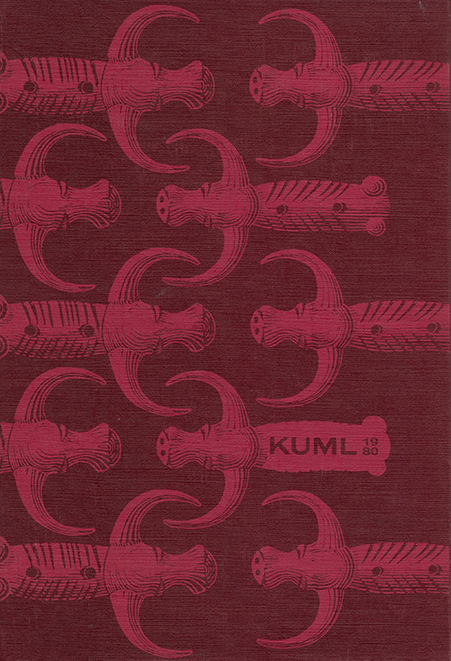Flint flakes as sacrificial finds
DOI:
https://doi.org/10.7146/kuml.v29i29.107190Keywords:
flint flake, sacrifice, north jutlandAbstract
Flint flakes as sacrificial finds
The composition of various archaeological find categories often differs greatly. Grave and sacrificial finds frequently consist of costly implements and ornaments, whereas Stone Age settlement finds are dominated by flint flakes and other refuse. However, a couple of finds from northern Jutland diverge from this pattern.
In 1924 at Sneverholt, Vendsyssel, a barrow was investigated. At its bottom there was a large stone cist, oriented north-south and measuring approximately 2.45 m long, 1.1 m wide, and 1.0 m high. In the southeast corner of the cist was a flint dagger of type V A, a barrel-shaped clay vessel, and a pile of thirty-five flint flakes, fifteen of which had retouch. The grave itself belongs to the type of large stone cists from northern Jutland. Although most of these structures were built in the Single Grave period, the type seems to have survived down into the Dagger period. The grave goods in the structure under discussion, however, may come from a secondary use of the cist. The dagger dates the burial to SN C (the late Neolithic) and it is probable that the clay vessel and the flint flakes are also related to this burial. The find of the thirty-five flint flakes is unique among the late Neolithic graves. In two hoards from Vendsyssel in northern Jutland, the finds included implements from the late Neolithic (Dyrskov) and early Bronze Age (Gjerå). There were also about ten and one-hundred-ten flint flakes, respectivcly.
These finds must be seen in the light of a special sacrificial custom in west Scandinavia. In south Norway and west Sweden, a total of sixteen hoards has been found which, along with implements from the late Neolithic and early Bronze Age, consist of five or more flint flakes. Several of the finds include daggers produced in north Jutland. The finds are concentrated in the Norwegian Vestland. This is also the area of concentration for hoards consisting exclusively of flint flakes. Twenty-six finds of this type contain ten or more flakes. Most of them have come to light on Jæren. Probably they too belong to the late Neolithic and early Bronze Age.
Natural access to usable flint varied greatly in the various regions of Scandinavia. Sacrificial finds consisting exclusively of flint flakes are concentrated in an area where it was difficult, although possible, to procure flint. These special sacrificial finds can most probably be explained by the lack of flint. In west Scandinavia, flint flakes served the same sacrificial purposes as, for example, large axe blanks in areas rich in flint.
The three Danish finds must be seen as the southernmost offshoots of this particular sacrificial custom. The entire group of sacrificial finds, together with the fact that several of the southern Norwegian finds contain daggers produced in northern Jutland, testify to communication throughout various regions of the Kattegat coast in the Late Neolithic and early Bronze Age.
Klaus Ebbesen
Downloads
Published
How to Cite
Issue
Section
License
Fra og med årgang 2022 er artikler udgivet i Kuml med en licens fra Creative Commons (CC BY-NC-SA 4.0).
Alle tidligere årgange af tidsskriftet er ikke udgivet med en licens fra Creative Commons.


